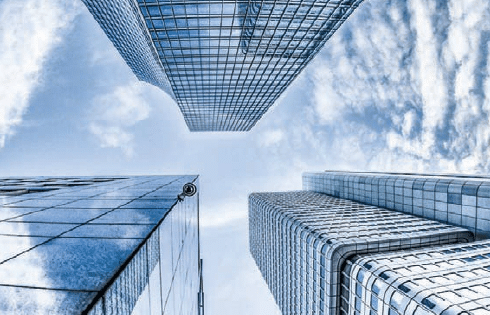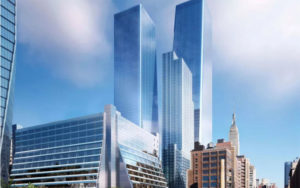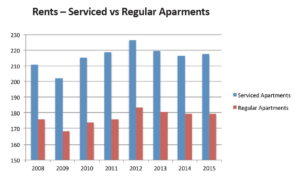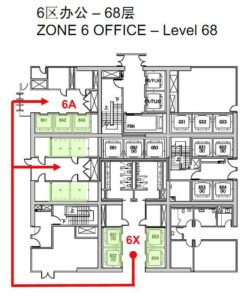China emits more than twice as much carbon as the US or any other nation (i), and China’s built environment – including all aspects of its construction and operation and not including infrastructure – accounts for about 38% of the country’s total emissions (ii).
Moreover, China’s built environment is the largest and fastest growing of any country’s, meaning that without efforts to reduce its emissions, they will massively increase (iii).
The above facts make clear that greening China’s real estate and construction industries is absolutely essential for mitigating global climate change. Fortunately, the country has been making significant progress on this front.

Progress in Greening the Real Estate Industry
The amazing growth of China’s electric vehicle and solar industries provide firm evidence of the the country’s ability to make enormous leaps towards a carbon neutral future, and significant progress is being made in other areas as well. For example, in 2021 carbon emissions from China’s production of building materials was 8% lower than when it had peaked in 2016 (iv).
Such facts suggest that China is likely also making significant progress towards meeting the built environment carbon reduction goals of the 14th Five-Year Plan that guides the country’s development from 2020 to 2025. Some of the 14th Five-Year Plan’s goals include:
• increase the building electrification ratio from 44.9% to 55%
• raise the amount of renewable energy used to power the urban built environment to 8%
• boosting construction of energy efficient prefabricated buildings to 30% of all new buildings constructed
• carry out energy efficiency retrofitting and renovations on 350 million square meters of existing building space
• construction of 50 million square meters of carbon-neutral or nearly carbon-neutral buildings
• installation of 100 million square meters of geothermal-powered new building space
• increase by 30% the energy efficiency of new residential buildings
• increase by 20% the energy efficiency of new public buildings
Green Buildings of the Future
Renovating existing buildings to make them more energy efficient and reducing emitted carbon during construction are the low-hanging fruit that will likely contribute most to reducing carbon emissions in the near term. But buildings that are fully carbon-neutral or nearly so are already popping up around the world. Besides being low-carbon, these structures typically have other sustainability characteristics that make them healthy and enjoyable places to work.
One inspiring example is Google’s new 1265 Borregas project, a five-story office building in California that uses mass timber – a new type of engineered wood that involves layering and laminating smaller pieces of wood together to create larger beams and walls. The building’s embodied emissions (carbon emitted during the creation of the building) are estimated to be 96% less than that of a traditional steel and concrete structure of comparable size.
As one would expect, China is not lagging behind in the building of exceptional green building. A few of the country’s high-profile sustainable projects in the commercial real estate field are listed below.
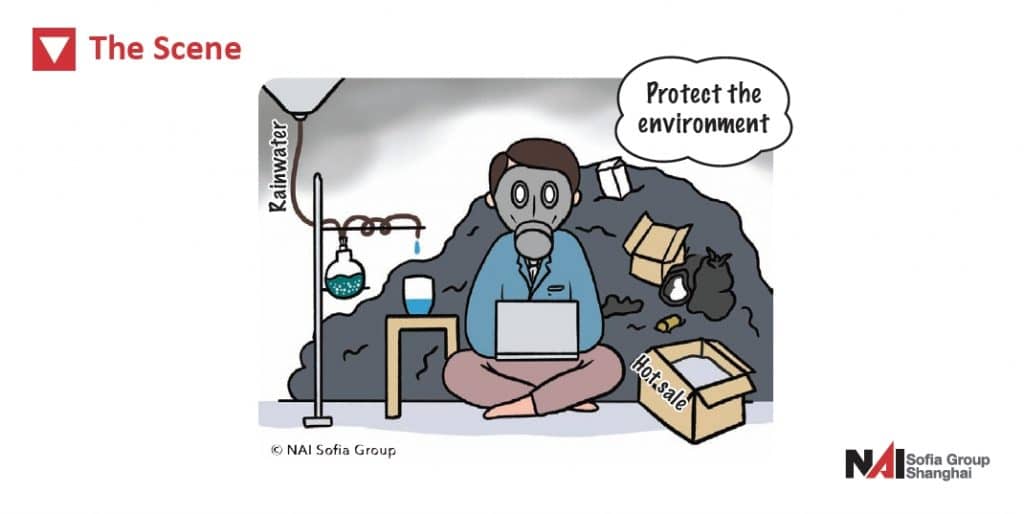
CCFED Sci-Tech Innovation Building (Guangzhou)
As China’s first near-zero energy building exceeding 150 meters in height, the CCFED Sci-Tech Innovation Building focuses on energy efficiency, active energy performance improvements, and the full utilization of renewable energy. Through high-efficiency energy management systems and heat pumps, the building significantly reduces carbon emissions during its operation. The building’s solar system generates approximately 20% of its energy needs, further reducing reliance on external energy sources. The project also incorporates carbon removal and offset measures, earning the Gold-level Carbon Neutrality Building certification. It is the first super-tall building in China to achieve this certification. These measures have resulted in a 35% reduction in carbon emissions, alongside significant energy savings.
Plaza 66 (Shanghai)
In the Phase III expansion of Shanghai Plaza 66, nearly 100% of the structural steel used in the building’s construction is low-carbon steel, making it the first commercial real estate project in mainland China to almost fully integrate lowcarbon steel in its structure. This shift significantly reduces the embodied carbon of the building, cutting the total carbon emissions of the steel used by 35% compared to traditional steel. The low-carbon steel was supplied by Baosteel, a leader in China’s steel industry, and is part of Hang Lung Group’s broader efforts to drive decarbonization in the Chinese real estate sector, setting an important milestone in sustainable construction.
AIRSIDE (Hong Kong)
Located in Hong Kong’s Kai Tak Development Area, AIRSIDE integrates climate resilience with sustainable design. The building boasts a 36% green roof coverage, which helps manage stormwater, reduce heat island effects, and improve the local microclimate. With the largest photovoltaic solar panel system in any commercial building in Hong Kong, AIRSIDE produces a significant portion of its own energy, helping to reduce dependence on the grid. Additionally, AIRSIDE’s smart waste sorting system reduces waste by more than 80%, diverting materials from landfills and promoting a circular economy. This combination of green roofing, solar energy, and waste reduction makes AIRSIDE a model of resilience.
Side information:
The WELL Building Certification levels, ranked from lowest to highest, are Bronze, Silver, Gold, and Platinum. The U.S. WELL Building Standard encompasses seven key categories: Air, Water, Nourishment, Light, Fitness, Comfort, and Mind, with a total of 102 criteria.
—————————————
(i) International Energy Agency
(ii) Caixin media’s ESG360 project
(iii) Ibid.
(iv) Ibid.

